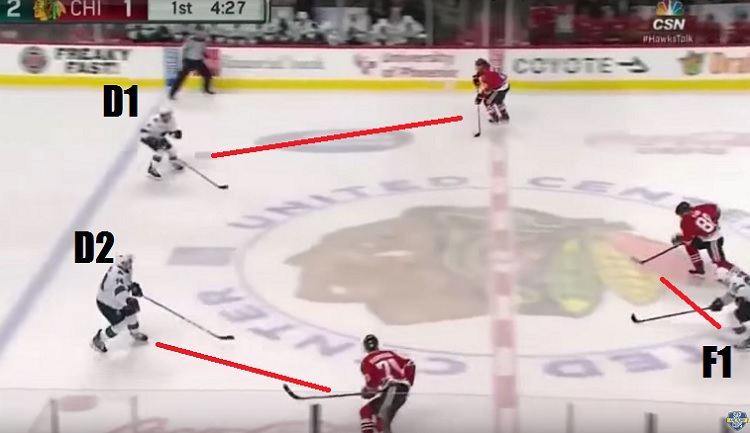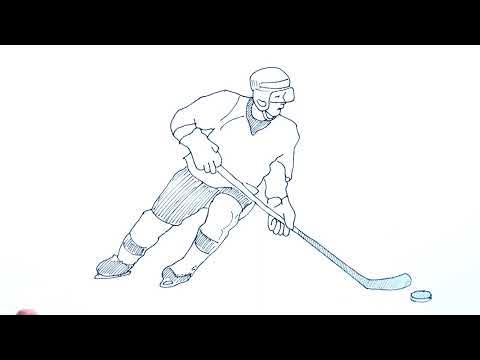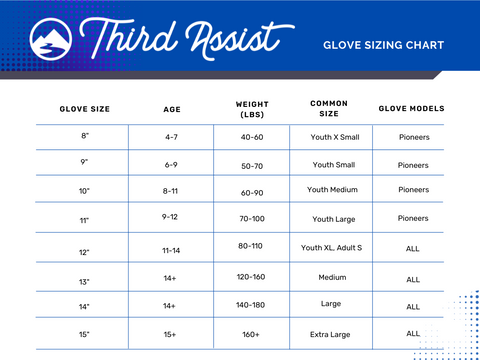Playing defense in ice hockey is crucial. It can make or break your team’s success.
Ice hockey is a fast-paced sport where defensive skills are vital. Good defense can stop goals and create chances for your team. Learning how to play defense effectively is not just about skill; it’s also about strategy, positioning, and awareness.
In this blog post, we will explore key techniques and tips to improve your defensive play. Whether you’re new to the game or looking to sharpen your skills, understanding these basics will help you become a stronger, more reliable defender on the ice. Get ready to dive into the essentials of playing defense in ice hockey!
Basics Of Ice Hockey Defense
Playing defense in ice hockey is crucial for team success. It requires skill, awareness, and teamwork. Understanding the basics helps you become a better player. This section covers the fundamental aspects of ice hockey defense.
Importance Of Defense
Defense is vital in ice hockey. It prevents the opposing team from scoring. A strong defense can turn the tide of a game. It supports the offense by creating opportunities. Good defense also boosts team morale.
Key Defensive Principles
There are several key principles to effective ice hockey defense:
- Positioning: Stay between the puck and the goal. Maintain a low stance for better balance.
- Stick Placement: Keep your stick on the ice. Use it to block passes and shots.
- Communication: Talk with your teammates. Let them know where you are and what you see.
- Gap Control: Keep a proper distance from attackers. Too close, and you risk getting beat. Too far, and they have room to maneuver.
- Body Contact: Use your body to block and check opponents. Do it legally and safely.
| Principle | Description |
|---|---|
| Positioning | Stay between the puck and the goal. Maintain balance. |
| Stick Placement | Keep your stick on the ice to block passes and shots. |
| Communication | Talk with teammates. Share information about your position. |
| Gap Control | Maintain proper distance from attackers. |
| Body Contact | Use your body legally to block and check opponents. |
Defensive Stance And Positioning
Understanding the defensive stance and positioning is vital for any ice hockey player. It’s the foundation of effective defense, helping you to block shots, intercept passes, and maintain control of the game. Let’s dive into the key aspects of a proper defensive stance and effective positioning.
Proper Stance
Maintaining a proper stance is crucial for defensive success. A good stance provides stability and agility. Here are some tips:
- Bend your knees slightly to lower your center of gravity.
- Keep your feet shoulder-width apart for balance.
- Hold your stick with both hands, ready to poke check or block.
- Stay on the balls of your feet for quick movements.
Effective Positioning
Effective positioning helps you cover key areas and anticipate the opponent’s moves. Here are some strategies:
- Always position yourself between the puck and your goal.
- Maintain a distance that allows you to react to the player’s actions.
- Use your stick to disrupt passing lanes and shooting angles.
- Communicate with your teammates to cover gaps and switch positions as needed.
Use these techniques to enhance your defensive play. Consistent practice will make these skills second nature, enabling you to defend effectively under pressure.
Stick And Body Control
Stick and Body Control are crucial for playing effective defense in ice hockey. Mastering these skills helps you prevent goals, steal the puck, and maintain control of the game. This section will cover two essential aspects: Stick Handling Techniques and Body Positioning.
Stick Handling Techniques
Effective stick handling can change the game. Here are some techniques:
- Keep your stick on the ice. This disrupts passes and shots.
- Use quick, controlled movements. This helps in intercepting the puck.
- Practice poke checks. Extend your stick to knock the puck away.
- Stick lift. Lift the opponent’s stick to gain control of the puck.
- Maintain a firm grip. This gives you more control during defensive plays.
Body Positioning
Proper body positioning is key to an effective defense. Follow these tips:
- Stay between the puck and the net. This blocks the opponent’s path.
- Keep your knees bent. This improves balance and agility.
- Face the play. Always keep your eyes on the puck and the player.
- Use your body to block shots. Position yourself to cover more area.
- Communicate with teammates. Inform them of your position and movements.
Both Stick Handling Techniques and Body Positioning are vital for a solid defense. Practice these regularly to improve your game.
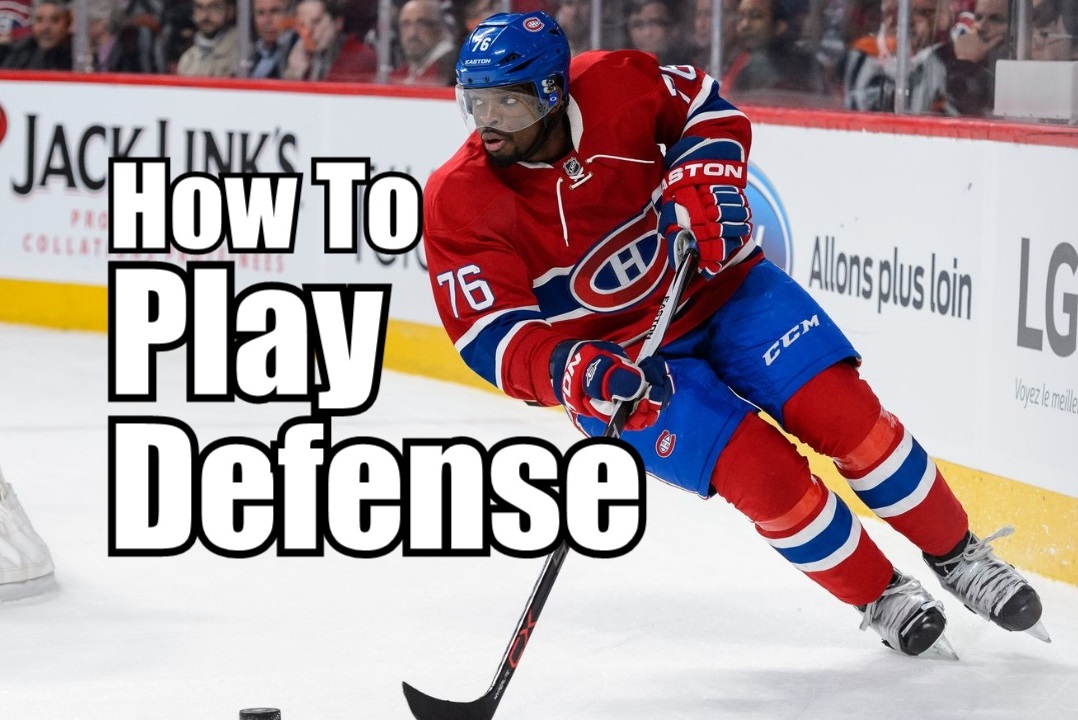
Credit: howtohockey.com
Skating Skills For Defenders
Skating skills are crucial for defenders in ice hockey. Good skating allows defenders to keep up with fast forwards. It also helps them to position themselves effectively. The following sections cover two key aspects of skating skills for defenders: backward skating and transition moves.
Backward Skating
Backward skating is essential for defenders. It lets them keep an eye on the puck and the opponent. To improve backward skating, practice staying low and balanced. Use short, quick strides to maintain speed and control. Keep your weight centered over your skates. This helps with stability and agility.
Another tip is to use your edges efficiently. This means pushing off with the inside edges of your skates. It gives you more power and control. Practice stopping and starting quickly. It helps you react to sudden changes on the ice.
Transition Moves
Transition moves are vital for switching between skating forward and backward. A smooth transition helps you keep up with the play. One common move is the pivot. To pivot, turn your hips and shoulders in the direction you want to go. Keep your knees bent and your weight low. This helps maintain balance and speed.
Another useful move is the crossover. This involves crossing one foot over the other while turning. It helps you change direction quickly. Practice crossovers in both directions. This gives you versatility on the ice. Use these moves to stay in front of the opponent and maintain control of the play.
Reading The Opponent
Reading the opponent is a crucial skill in ice hockey defense. This ability can make or break your team’s defense. To effectively read the opponent, you need to observe their patterns and tendencies. This helps in anticipating their moves and reacting quickly.
Anticipating Moves
Anticipating the opponent’s moves is vital. Watch their body language closely. Are they leaning left? They might go that way. Notice their stick position. If it’s angled forward, a shot or pass is likely.
Understand common plays. Teams often have set plays for certain situations. Learn these plays to predict their actions. For example, in a power play, the opponent may try a cross-ice pass. Be ready to intercept.
Study the opposing team’s key players. Know their strengths and weaknesses. If a player is known for fast skating, keep extra distance to match their speed. If they have a strong slap shot, block their shooting lane.
Reacting Quickly
Reacting quickly is essential in ice hockey. Your reflexes must be sharp. Practice drills that improve your reaction time. Quick changes in direction are common in hockey. Be prepared to pivot and skate backward swiftly.
Keep your feet moving. A stationary defender is easy to bypass. Stay on your toes and shift your weight as needed. This keeps you agile and ready to respond.
Communication with your teammates is key. A quick shout can alert a teammate to an incoming threat. Use hand signals if verbal communication is not possible. This coordination can stop an opponent’s advance.
Use these tips to enhance your defensive play. Reading the opponent, anticipating moves, and reacting quickly can improve your game.
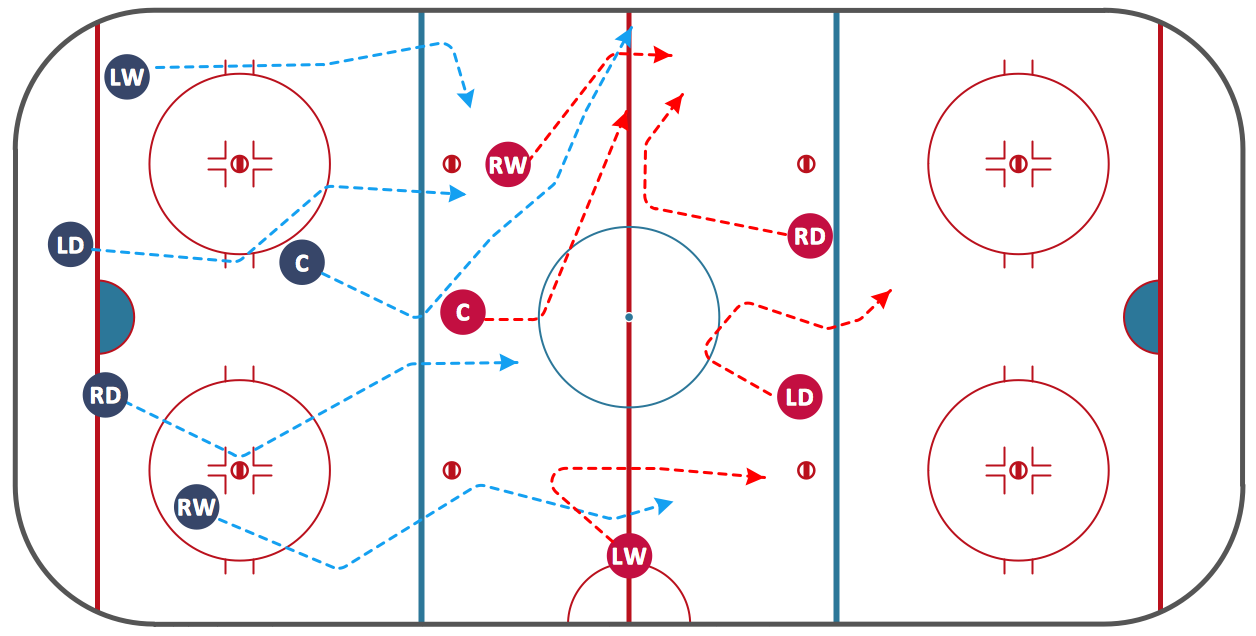
Credit: www.conceptdraw.com
Defensive Strategies
Defense is crucial in ice hockey. Proper defensive strategies can prevent goals and create scoring opportunities. Understanding and implementing these strategies can elevate your game and help your team succeed.
Man-to-man Defense
Man-to-Man defense involves each player marking an opponent. Players stick with their assigned opponent no matter where they move. This strategy requires good skating skills and awareness.
Here are some key points for effective Man-to-Man defense:
- Stay close to your assigned player.
- Anticipate their moves and stay ahead.
- Communicate with your teammates to switch assignments if needed.
- Always keep your body between your opponent and the goal.
Zone Defense
In Zone defense, players cover specific areas of the ice rather than specific opponents. This strategy is useful for protecting the goal area and managing fast-paced plays.
Here are some key points for effective Zone defense:
- Understand your designated zone and stay within it.
- Communicate with teammates to avoid overlapping zones.
- Keep your head up and watch for opponents entering your zone.
- Be ready to support your teammates when they face pressure.
| Man-to-Man Defense | Zone Defense |
|---|---|
| Marking specific players | Covering specific areas |
| Requires good skating skills | Focuses on position and awareness |
| Adapts to opponent’s movements | Protects key areas like the goal |
Blocking Shots And Passes
Blocking shots and passes is crucial in ice hockey defense. Effective defense can change the course of a game. It involves positioning, quick thinking, and skill. Here, we’ll focus on shot blocking techniques and interception skills.
Shot Blocking Techniques
Shot blocking is about courage and timing. Position yourself between the shooter and the net. Bend your knees and stay low. This makes you a smaller target and ready to move. Use your body to cover as much of the net as possible.
Keep your stick on the ice. This prevents low shots from slipping through. Turn your body sideways to reduce injury risk. Wear proper equipment for protection. Practice these techniques regularly.
Interception Skills
Interception is about anticipating passes. Watch the opponent’s body language. This gives clues about their next move. Position yourself in passing lanes. This disrupts the opponent’s play.
Keep your stick active. Use it to deflect passes. Stay on your toes. Be ready to spring into action. Practice with teammates to improve timing and coordination.
Communication And Teamwork
In ice hockey, communication and teamwork are essential for a strong defense. Players must work together and stay connected. This ensures that everyone knows their role. Without proper communication, even the best plans can fail. Teamwork helps cover weaknesses and makes the defense stronger. Let’s look at two important aspects: on-ice communication and supporting teammates.
On-ice Communication
Effective communication on the ice is crucial. Players need to talk and signal to each other. This helps maintain awareness of the puck and opponents. Shout out instructions or warnings. Use hand signals for quick messages. This keeps everyone informed and ready to react. Clear communication helps prevent mistakes and missed assignments.
Supporting Teammates
Support your teammates at all times. Stay aware of their positions and actions. If a teammate gets out of position, cover for them. This ensures that there is no gap in the defense. Keep an eye on the puck and the opponents. Work together to close down spaces and block shots. Strong teamwork means less space for the opponents to exploit.
Staying Disciplined
Playing defense in ice hockey requires a high level of discipline. Staying disciplined on the ice helps you avoid penalties and maintain focus. This can make a huge difference in your team’s success.
Avoiding Penalties
Avoiding penalties is crucial for any defender. Penalties can leave your team shorthanded and give the opposing team a scoring chance. Keep your stick on the ice. Use your body, not your stick, to block opponents. Avoid actions like hooking, tripping, and slashing. These actions can easily result in penalties.
Positioning is key. Stay between the puck and your own net. This positioning helps you avoid risky moves that could lead to penalties. Always keep your feet moving to maintain control. Standing still makes you an easy target for faster players. Communication with your teammates also helps avoid unnecessary penalties. Let your teammates know where you are and when you need support.
Maintaining Focus
Maintaining focus during a game is essential. Distractions can lead to mistakes and scoring opportunities for the opponent. Keep your eyes on the puck and anticipate your opponent’s moves. Focus on your positioning and your role in the team’s defensive strategy.
Always be aware of the game clock and the score. This awareness helps you make better decisions. Mental toughness is crucial. Stay calm under pressure. Take deep breaths and reset your mind if you make a mistake. Practice mindfulness techniques to improve focus.

Credit: www.youtube.com
Frequently Asked Questions
What Are Key Defensive Techniques In Ice Hockey?
Key defensive techniques include stick checking, body positioning, and shot blocking. Players must stay between the opponent and the goal. They should also maintain good communication with teammates.
How Do You Improve Defensive Skills In Hockey?
To improve defensive skills, practice positioning, stickhandling, and skating agility. Watch professional games for techniques. Consistent drills and feedback from coaches are essential.
What Is The Role Of A Defenseman In Hockey?
A defenseman prevents goals by blocking shots and clearing the puck. They support the goalie and initiate offensive plays. Strong skating and positioning are crucial.
How Important Is Communication In Ice Hockey Defense?
Communication is vital for a strong defense. Players must call out plays and positions. It helps in maintaining team coordination and covering opponents effectively.
Conclusion
Playing defense in ice hockey requires skill and strategy. Stay alert. Communicate with teammates. Anticipate the opponent’s moves. Keep your stick on the ice. Maintain proper positioning. Practice regularly to improve your defensive skills. Focus on the basics. Defense can win games.
Enjoy the challenge and excitement of playing defense.

